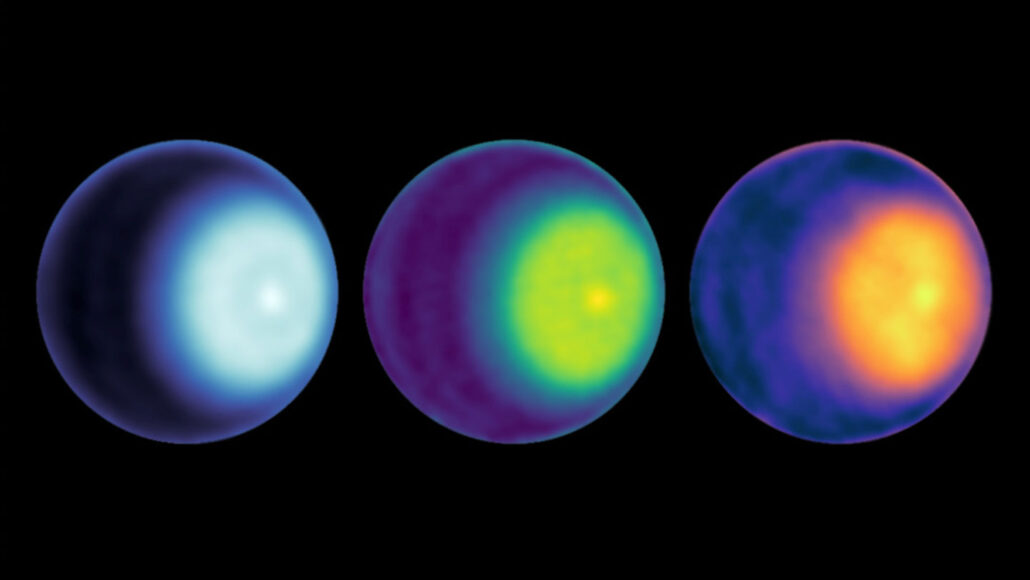The First-Ever Detection of a Cyclone Whirling on Uranus' North Pole

Beneath the pale blue orb of Uranus lies a polar cyclone, according to a report in Geophysical Research Letters on May 28. Detected using radio telescopes, this discovery represents the first direct observation of a cyclone on Uranus. A similar storm was hinted at the planet's south pole during a previous spacecraft flyby. Planetary scientist Michael Roman from the University of Leicester states that the appearance of this polar structure is exciting, as it reveals a unique phenomenon that had not been observed before.
In 1986, NASA's Voyager 2 spacecraft observed winds moving at faster speeds at Uranus’ south pole's center than in the nearby areas. This finding suggested the occurrence of a cyclone at the pole, but the spacecraft's instruments lacked the sensitivity required to confirm the storm.
In recent years, scientists have been able to explore the other side of the ice giant as Uranus' north pole turned more toward Earth. They identified similar hints of a swirling storm and used the Very Large Array radio observatory in New Mexico to probe the temperature under the clouds to seek further atmospheric clues. Planetary scientist Alex Akins and colleagues detected a spot at the north pole where the gas beneath the clouds was warmer and drier than its surroundings, revealing a low-pressure region in the middle of spinning winds. “These contrasts look similar to what we see in hurricanes on Earth,” Akins explains.
With the exception of Mercury, all planets in the solar system have been observed to contain some kind of swirling air mass at their poles. Akins plans to continue monitoring the cyclone to observe how it changes. Previous research indicates that it is increasing in strength and, if this trend continues, scientists can learn more about how Uranus’ atmosphere functions.
The National Academies of Sciences, Engineering, and Medicine advised sending a probe to Uranus in 2022. Michael Roman says: “The more we can learn about Uranus as we begin to plan a mission, the better we can focus our planning for that mission.”
It is our objective to provide accurate and compelling scientific news to the public. Our mission is more critical today than ever before. As a non-profit news organization, we cannot do this without your support. Your contribution enables us to deliver high-quality science journalism that is free and accessible to the next generation of scientists and engineers. Donate now to invest in prominent science journalism.




